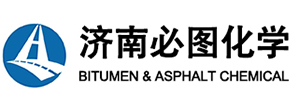- mike@bitumenchem.com
- +86 15066607710
- Tongfa Avenue, Changqing District,Jinan
Location: Home > News & Trends > Industry News
1. Preparation method: In a 10L polymerization reactor, first add distilled water, sodium dodecylbenzene sulfonate and other raw materials, add ammonium persulfate at 80℃ for polymerization for 3h, then add styrene, butadiene and other mixtures until the polymerization is completed, remove the residual monomers and adjust the pH value to 7 with potassium hydroxide to obtain latex.
2. Raw material compatibility: The mass ratio of each component is 5-26 aliphatic conjugated diene, 5-50 aromatic vinyl compound, 0.5-5 vinyl unsaturated carboxylic acid, 0.5-2 unsaturated amide, and 0.15-0.2 dodecanethiol.
3. Product application: Mainly used for paper coating, the formula is 70 kaolin calcium carbonate, 17 latex, 30 oxidized starch, and 0.3 dispersant.
4. Product characteristics: It is a tetrapolymer latex. The two-stage polymerization method is used to achieve the best balance between the adhesion and optical properties of the latex. It has excellent performance and can meet the requirements of improving the optical properties of paper, improving printing performance and high-speed coating performance; the coating produced has excellent mechanical stability, fluidity, adhesion strength and water resistance, and the adhesion strength is optimally balanced with gloss and foaming resistance.
5. Performance advantages: Latex particle size characteristics: The prepared butadiene latex has a large particle size of 300-1000nm. The ABS resin prepared using this latex has excellent comprehensive properties such as impact resistance. At the same time, the small-particle PB latex preparation method provided can ensure that the particle size of the PB latex product is within the range of 85-120nm, and has excellent agglomeration effect. Good reaction performance: short polymerization time (less than 20h), uniform reaction heat release, easy heat removal and operation, high monomer conversion rate, few precipitates during the reaction process, small latex viscosity, and stable particle size. Improved product performance: After cooling down during the 40% - 80% conversion period, the latex performance is significantly better than the step-by-step heating method.
- Is the preparation method of SBS modified bitumen
- Can we predict the performance and stability of mo
- Advantages and Disadvantages of Segregation Test t
- BAC:Lower cost and higher reliability
- In the production process of rubber bitumen, the c
- What are the conditions that affect the epoxidatio
- What are the performance characteristics of modifi
- Why is excessive coupling agent the main cause of







